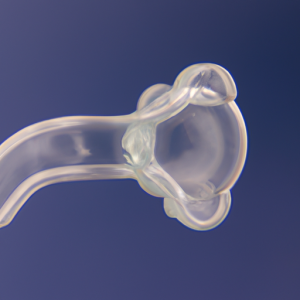Arthrosis, also known as osteoarthritis, is a debilitating and common joint disorder that affects millions of people worldwide. As we age, the wear and tear on our joints can lead to the development of arthrosis, causing pain, stiffness, and reduced mobility. In this article, we will delve into the intricacies of arthrosis, exploring its diagnosis, symptoms, and causes. We will also examine the various treatment options available, from medications to lifestyle changes. Additionally, we will provide valuable tips on prevention and management, offering guidance on how to maintain joint health and enhance quality of life. Whether you or a loved one is dealing with arthrosis, or simply interested in learning more about this condition, this comprehensive guide aims to provide a deeper understanding of arthrosis and empower you with the knowledge to make informed decisions regarding your joint health.
1. Understanding Arthrosis: An In-depth Look at Diagnosis, Symptoms, and Causes
Arthrosis, also known as osteoarthritis, is a common degenerative joint disease that affects millions of people worldwide. It occurs when the protective cartilage that cushions the ends of the bones wears down over time, causing pain, stiffness, and swelling in the affected joints. In this section, we will delve into the various aspects of arthrosis, including its diagnosis, symptoms, and causes.
Diagnosis of arthrosis typically begins with a thorough medical history and physical examination by a healthcare professional. During the examination, the doctor will look for signs of joint tenderness, swelling, and limited range of motion. They may also order diagnostic tests such as X-rays, magnetic resonance imaging (MRI), or joint fluid analysis to confirm the diagnosis and rule out other possible conditions.
The primary symptom of arthrosis is joint pain, which can vary in intensity and may worsen with physical activity. Other common symptoms include stiffness, especially in the morning or after periods of inactivity, and swelling or tenderness in the affected joints. In advanced stages, arthrosis can lead to joint deformities and difficulty performing daily tasks.
The exact causes of arthrosis are not fully understood, but there are several known risk factors that can contribute to its development. Age is one of the primary risk factors, as the wear and tear on the joints accumulate over time. Obesity also increases the risk of developing arthrosis, as the excess weight puts additional pressure on the joints. Joint injuries, such as fractures or ligament tears, can also lead to the development of arthrosis later in life. Additionally, genetic factors, hormonal imbalances, and certain metabolic disorders may play a role in the onset of arthrosis.
While there is no cure for arthrosis, various treatment options are available to manage the symptoms and slow down the progression of
2. Exploring Treatment Options for Arthrosis: From Medications to Lifestyle Changes
Arthrosis, also known as osteoarthritis, is a degenerative joint disease that affects millions of people worldwide. It occurs when the protective cartilage on the ends of bones wears down over time, leading to pain, stiffness, and reduced mobility. While there is no cure for arthrosis, there are various treatment options available to manage the symptoms and improve the quality of life for individuals living with this condition.
One of the primary goals of arthrosis treatment is to alleviate pain and inflammation. Nonsteroidal anti-inflammatory drugs (NSAIDs) are commonly prescribed to reduce pain and swelling associated with arthrosis. These medications can be effective in providing short-term relief, but long-term use may have side effects, such as gastrointestinal issues and increased risk of cardiovascular problems. Therefore, it is crucial to consult a healthcare professional before starting any medication regimen.
In addition to medication, physical therapy plays a vital role in managing arthrosis. Physical therapists can design personalized exercise programs to help improve strength, flexibility, and joint stability. Strengthening the surrounding muscles can alleviate stress on the affected joint and enhance its overall function. They may also incorporate techniques like heat or cold therapy, ultrasound, or electrical stimulation to provide pain relief.
For individuals with severe arthrosis and persistent pain, joint injections may be recommended. Corticosteroid injections directly into the affected joint can provide significant relief by reducing inflammation. However, these injections are typically limited to a few times a year due to potential side effects, including joint infection and tendon weakening.
Besides medical interventions, lifestyle changes can also contribute to managing arthrosis symptoms. Maintaining a healthy weight is crucial as excess weight puts additional stress on the joints. Losing weight, if necessary, can significantly reduce pain and improve joint function. Engaging in low-impact exercises, such as swimming or cycling,
3. Prevention and Management of Arthrosis: Tips for Maintaining Joint Health and Quality of Life
Prevention and Management of Arthrosis: Tips for Maintaining Joint Health and Quality of Life
Arthrosis, also known as osteoarthritis, is a degenerative joint disease that affects millions of people worldwide. While it may not be possible to completely prevent the development of arthrosis, there are several steps individuals can take to reduce the risk and manage the condition effectively. By adopting a comprehensive approach that combines lifestyle modifications, self-care practices, and medical interventions, individuals can maintain joint health and improve their overall quality of life.
1. Maintain a healthy weight: Excess weight puts additional strain on the joints, especially the hips, knees, and ankles. By maintaining a healthy weight, individuals can reduce the risk of developing arthrosis and alleviate symptoms in those already affected. Regular exercise, coupled with a balanced diet, can help achieve and maintain an optimal weight, thereby reducing joint stress.
2. Stay active: Regular physical activity is crucial for joint health and mobility. Engaging in low-impact exercises such as swimming, cycling, or walking can strengthen the muscles surrounding the joints and improve their flexibility. It is important to start slowly and gradually increase the intensity and duration of exercise to avoid joint injuries. Additionally, individuals should consult with their healthcare provider to determine the most suitable exercise regimen for their specific condition.
3. Protect the joints: Taking precautions to protect the joints can significantly reduce the risk of arthrosis. Simple measures such as using ergonomic tools and techniques during repetitive movements, wearing appropriate footwear, and avoiding activities that place excessive stress on the joints can go a long way in preserving joint health. For example, using knee pads while gardening or implementing proper lifting techniques can help prevent unnecessary strain on the joints.
4. Implement joint-friendly modifications: Making modifications to the living environment can make daily activities easier and less stressful on the joints.

